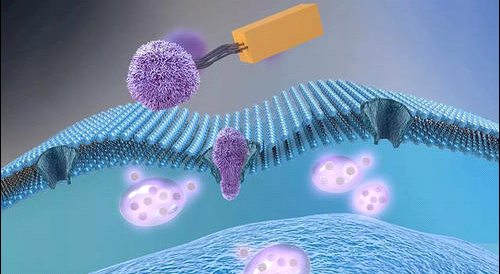FITC-PEG-SH束缚浓度梯度水凝胶的构建与有效扩散系数分析
论文资料:MICRORHEOLOGICAL QUANTIFICATION OF CELL-MEDIATED REMODELING OF POLYMER-PEPTIDE HYDROGELS IN RESPONSE TO CHEMICAL CUES文献综述联接: 英文论文:The next chapter describes the development of a new technique to create hydrogels with tethered concentration gradients of polymers or proteins. This technique also enables us to measure the diffusion coefficient of solutes in hydrogels. Hydrogels with tethered concentration gradients of cell signaling molecules can be used to direct cell migration from the scaffold to the wound after implantation. A rectangular prism is the basis of our microfluidic device. Before using the microfluidic device to create hydrogels with a tethered concentration gradient of TNF-α, we make concentration gradients with a model polymer, Fluorescein poly(ethylene glycol)-thiol (FITC-PEG-SH), to validate the technique. We first make a calibration curve by measuring hydrogels with known concentrations of FITC-PEG-SH and measure their arbitrary brightness using a laser scanner. This calibration curve relates brightness with tethered molecule concentration. We form hydrogels with tethered concentration gradients of FITC-PEG-SH by allowing the molecule to diffuse for 6, 24 and 48 hours. Hydrogels with tethered concentration gradients of FITC-PEG-SH are placed on the laser scanner and spatial brightness is measured. The calibration curve is then used to back-calculate local concentrations every 25 micrometers along the hydrogel. Next, we curve-fit a solution of Fick’s second law of diffusion to calculate the effective diffusion coefficient of FITC-PEG-SH. In the FITC-PEG-SH experiments, we hypothesize that steady state diffusion is reached when a gradient forms for 24 hours. We use the same method to make concentration gradients of thiolated and dyed TNF-α tethered into hydrogels.



 pg电子娱乐游戏app
微信公众号
pg电子娱乐游戏app
微信公众号 官方微信
官方微信